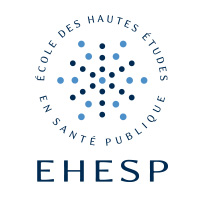GIS and statistics to analyze scale change consequences on medical desert classification in France
Résumé
Background
Accessibility is a crucial way to overcome geographical restrictions and provides a path for alleviating the medical desert. Less attention has been paid to the choice of spatial unit in the effect of healthcare multi-accessibility. Inside the OASES European program, the France team proposes to create medical desert classification at the municipality level. The contribution of this study is to highlight the consequences of the choice of spatial scale on spatial distribution and the discrepancies between medical desert classifications.
Methods
Analyses were carried out in metropolitan France and overseas departments, at the commune scale and two other supra-communal scales used by public policies in France. For each spatial unit, a multidimensional and professional classification has been conducted using a three-step method: scores, principal component analysis and clustering. To demonstrate the presence of spatial dependence and to measure homogeneity between classifications joint count autocorrelation indicators and Theil’s indexes were applied.
Results
Our results present 7 classes of municipalities, and 5 classes of EPCI or living territories according to their level of healthcare accessibility, the dynamic of supply, and the needs of the population. Spatial representation of the classification demonstrates greater variability at the municipality level than other supra scales. Informative contrasted classes at the municipality level disappeared in favor of the middle class in all accessibility at supra scales. The results demonstrate that spatial dependence between areas at the municipality level reduced the scale effect.
Conclusions
Spatial approaches have become increasingly popular since they enable decision-makers to identify priority areas and allocate resources. Recognizing the instability across various scales is therefore crucial for thinking about the optimal unit of data aggregation when investigating the medical desert.
Key messages
• Choice of the scale is a mix between public policy decisions and data availability.
• Contiguity constraint is a way to reduce the loss of information after aggregation.
Domaines
Santé publique et épidémiologie| Origine | Fichiers éditeurs autorisés sur une archive ouverte |
|---|---|
| licence |





